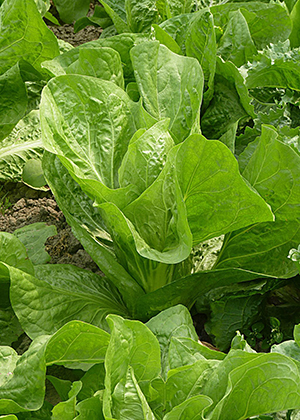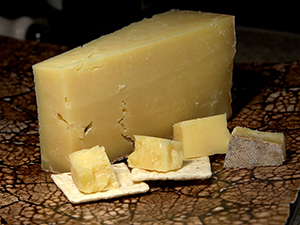For my next food post, I meant to share a lunch menu with you, but just this week I stumbled upon a dinner so quick and easy and good that it’s jumping the queue. It’s a meal in one dish, though I suppose you could add sides if you wished.

Ingredients
Topping
small brick of seaside cheddar cheese, grated
Meat
3 tablespoons olive oil
6 baby carrots
1 medium onion
3 garlic cloves
1 teaspoon thyme
1 teaspoon oregano
1 teaspoon tarragon
2 pounds ground beef
Dressing
5 tablespoons olive oil
2 tablespoons balsamic vinegar
1 tablespoon dijon mustard
Salad
a generous bunch of arugula
a head of romaine lettuce
Preparation
Dice the onion, mince the garlic, and slice the carrots.
Heat the olive oil in a large pot. Add the carrots and sauté 2 or 3 minutes. Add the onions and sauté 2 or 3 minutes. Cover and turn down the heat to low. Let cook for 10 minutes.
While the onions and carrots cook, measure out the spices and grate the cheese. Rinse, drain, and shred the romaine and arugula. Mix the dressing by whisking the olive oil, the vinegar, and mustard. Toss the greens with the dressing and set aside.
The carrots should be soft by now. Add the oregano, thyme, and tarragon. Add the garlic. Stir briefly and sauté for 1 minute. Add the ground beef, breaking it up and mixing it with the carrots and onions. Continue to sauté, stirring as needed to get the meat thoroughly browned and cooked, about 10 minutes. When done, pull off the heat.
To serve: put a generous helping of the salad greens on each plate. Spoon the meat over the salad. Sprinkle the grated cheese on top. Enjoy! (Serves 4.)
Benefits
Why do I think this is healthy? Yep, I’m always dragging nutrition into it! Let’s start with the easy ones first. Just about anyone can go on and on about how healthy vegetables are, but I find it fun to focus on some of the specifics, especially specifics unfamiliar to me. So…
 The Greens: Romaine and Arugula
The Greens: Romaine and Arugula
Romaine lettuce is a powerhouse of the B-vitamins, especially folate. It’s got more vitamin C than carrots! Plus it contains lots of beneficial omega-3 fats, the kind most of us think you must eat fish to obtain. Romaine is also mineral rich (calcium, magnesium, manganese, phosphorus, potassium, selenium, zinc, and iron) and filled with the phyto-nutrients that fight cancer and other ailments.
Arugula boasts many of the same benefits, being packed with vitamins, minerals, and phyto-nutrients. Like romaine, it’s an official “hydrating food” that keeps the body hydrated during hot weather. However, it may also have a more unusual property. The ancient Romans found that regular eaters of arugula possessed more sexual energy and revered the food as an aphrodisiac!
Carrots
 The large amount of beta carotene in carrots acts as an anti-oxidant, preventing cell damage and slowing aging. Plus it gets converted into vitamin A, good for the eyes, hair, and skin. Carrots prevent strokes. Most unusually, they help the liver to flush out toxins.
The large amount of beta carotene in carrots acts as an anti-oxidant, preventing cell damage and slowing aging. Plus it gets converted into vitamin A, good for the eyes, hair, and skin. Carrots prevent strokes. Most unusually, they help the liver to flush out toxins.
Onions
Another powerhouse of nutrients, onions also improve the efficacy of vitamin C, help regulate blood sugar levels, relieve inflammation, and prevent cancer.
Well, that was pretty straight forward with few surprises, but I bet the next entries in my narrative might prove unexpected. Let’s consider the rest of the dinner. 😀
The Dressing: Olive Oil & Vinegar
 First off, making your own salad dressing means you’re not using the bottled kind, most of which include a host of dubious additives and most of which are made with cheap seed oils, such as canola and safflower. The processing of these fragile seed oils causes them to go rancid. Rancid oil is filled with free radicals, which damage cells. Additionally, rancid oils must be deodorized with powerful chemical scrubbers that leave dangerous residues and create deadly transfats. Not good!
First off, making your own salad dressing means you’re not using the bottled kind, most of which include a host of dubious additives and most of which are made with cheap seed oils, such as canola and safflower. The processing of these fragile seed oils causes them to go rancid. Rancid oil is filled with free radicals, which damage cells. Additionally, rancid oils must be deodorized with powerful chemical scrubbers that leave dangerous residues and create deadly transfats. Not good!
But homemade dressing also has more positive benefits.
Like onions, olive oil prevents inflammation in the body. Since chronic inflammation is now thought to be the precursor to many diseases – heart disease and cancer among them – this is important. Olive oil prevents damage to the cells that line our blood vessels. It lowers both blood cholesterol and blood pressure. If it is cold-pressed, it retains the lipases which facilitate the breakdown of triglycerides. (Triglycerides are a marker for heart disease.)
Vinegar provides its own set of advantages. It increases the absorpption of minerals such as calcium. It slows the breakdown of starches into sugars, giving the body more time in which to regulate blood sugar levels, especially valuable to diabetics. Plus it adds flavor without adding calories.
Both oil and vinegar provide a host of enzymes to help food digest well and thoroughly.
Now I’ll move on to the really tough stuff. Regular readers of my blog probably have an inkling of what to expect, but if you’re new…hold onto your hat!
Cheese does pack a powerful wallop of protein, calcium, phosphorus, vitamins D and B12, and potassium, but common wisdom recommends that you eat only tiny amounts of it because of its high fat content and high calorie count.
Well, as a low-carb eater, I won’t bemoan the fat content. We need that fat to feed our brains and to keep our blood sugar low. You can read more about the benefits of fat in the diet here.
But fat and calories in cheese possess another advantage. Its unique blend of fat and protein is exceptionally satiating. That is, eaters feel satisfied with less and grow hungry again much later than if they’d eaten an equal amount of calories from another food. Eating cheese supports weight loss!
Cheese also helps regulate blood sugar levels. It’s a source for vitamin K (produced by the microorganisms that turn milk to cheese) and vitamin D (naturally present in milk and rarely present in other foods, but critical to immune function).
Aged cheeses, such as cheddar, possess little lactose, making them ideal for lactose-intolerant eaters. Good stuff!
Now for the most maligned food of all. Drum roll!
First of all, there’s a good bit of difference between feedlot beef and pasture-raised, grass-fed beef. You can read more about it here. Grass-fed beef is a lot healthier! But beef possesses surprising nutritional resources.
Dr. Mat Lalonde – a Harvard chemist – analyzed the different food groups for nutrient density, looking at all the vitamins and minerals whose praises we hear sung by all the media. Make no mistake: vegetables do provide these wonderful substances. But guess what? So does meat, in greater quantity than plant foods and with greater bioavailabilty (which means they’re easier for the body to assimilate). Here’s Dr. Lalonde’s findings:
Grains – Nutrient Density Score: 1.2
Fruit – Nutrient Density Score: 1.5
Vegetables – Nutrient Density Score: 2.0
Legumes – Nutrient Density Score: 2.3
Eggs & Poultry – Nutrient Density Score: 3.1
Pork – Nutrient Density Score: 3.7
Beef – Nutrient Density Score: 4.3
Fish & Seafood – Nutrient Density Score: 6.0
Organ Meats – Nutrient Density Score: 21.3
There’s a reason Mom always tried to make you eat liver when you were a kid! Ditto the fish. But beef pulls a pretty good score, more than twice that of vegetables. Vitamins, minerals, and protein – beef’s got them all.
 But what about all that saturated fat?
But what about all that saturated fat?
Therein lies a tale. You can read more about saturated fats here. But beef fat consists of 42% monounsaturated fat, 4% of polyunsaturated fat, and only 50% saturated fat. Not quite the expected breakdown, is it? However, that saturated fat is actually a good thing! I’ll summarize some of its good points below.
Saturated fats provide the building blocks for cell membranes and many hormones. Cell membranes are composed of 50% saturated fat. When you don’t eat enough, the body substitutes polyunsaturated fat or monounsaturated fat, whatever is available. But the substitutions don’t regulate what goes in and out of the cell quite they way they should, and you feel less well than you could or even get sick. The case for saturated fats is even stronger when you look at hormones, the messengers between the different organs. When their basic building block is scarce, the hormone is scarce too, and you wind up with problems such as infertility.
Saturated fats include both short-chain fatty acids and long-chain ones. The short ones have anti-microbial properties, protecting us from viruses, yeasts, and pathogenic bacteria. Short-chain fatty acids don’t need bile for digestion and thus are used directly for quick energy. This quality means they are less likely to be stored in fat cells and cause weight gain. The long-chain fatty acids are the precursors to hormones that I mentioned above.
Saturated fats allow calcium to be incorporated into our bones. (Osteoporosis, anyone?)
Saturated fats protect the liver from toxins, such as those in acetaminophen.
 There’s more, but I suspect I’ve gone on about the benefits of saturated fat and beef for long enough. 😀
There’s more, but I suspect I’ve gone on about the benefits of saturated fat and beef for long enough. 😀
Bottom line: enjoy your beef and enjoy this dish! It’s both delicious and healthy.
For an analysis of a breakfast menu:
A Healthy Breakfast
For more about nutrition:
Yogurt and Kefir and Koumiss, Oh My!
Handle With Care
Test first, then conclude!


